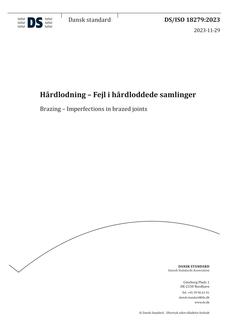-
-
Available Formats
- Availability
- Priced From ( in USD )
-
Available Formats
-
- Immediate download
- $194.58
- Add to Cart
-
- Printed Edition
- Ships in 1-2 business days
- $194.58
- Add to Cart
Customers Who Bought This Also Bought
-

DANSK DS/ISO 18279
Priced From $71.06 -

DANSK DS/ISO/IEC 30118-5
Priced From $130.87 -

DANSK DS/ISO/IEC 27034-3
Priced From $120.79 -

DANSK DS/EN 16481
Priced From $145.05
About This Item
Full Description
This part of IEC 60728 is applicable to any cable network (including individual receiving systems) having in the forward path a coaxial cable output and primarily intended for television and sound signals operating between about 30 MHz and 3 000 MHz. This standard specifies the basic methods of measurement of the operational characteristics of cable network having coaxial cable outputs in order to assess the performance of these systems and their performance limits. All requirements refer to the performance limits, which shall be obtained between the input(s) to the headend or headends and any system outlet when terminated in a resistance equal to the nominal load impedance of the system, unless otherwise specified. Where system outlets are not used, the above applies at the subscriber’s end of the subscriber’s feeder. Also the requirements which are obtained between the input(s) to the headend or headends and any home network interface (HNI) are given. NOTE 1 – Methods of measurement described in this standard are considered as basic. However, any equivalent method that ensures at least the same accuracy may be used. NOTE 2 – If the system operator wishes to subdivide the system into a number of parts or wishes to use different transmission media (for example, coaxial cabling, balanced cabling, optical cabling), the accumulation of degradations should not exceed the figures given in this standard. NOTE 3 – System performance requirements of return paths as well as special methods of measurement for the use of the return paths in cable networks are described in IEC 60728-10. Clause 5 defines the system performance limits which will, with an unimpaired input, (headend input signal), produce picture and sound signals (at system outlets) where the impairment to any single parameter will be not worse, in normal operating conditions for any analogue channel, than Grade four on the five-grade impairment scale contained in ITU-BT 500-10. For digitally modulated signals, the quality requirement is a quasi-error-free (QEF) reception. Appropriate performance requirements for the signals at the receiving antennas site are given in Clause 6 in order to provide at the input of the headend of the cable network both analogue and digital television signals with suitable quality. Clause 7 is applicable to home networks (including those of individual receiving systems) using coaxial cables, balanced cables or optical cables and primarily intended for television signals, sound signals and interactive services, operating between about 30 MHz and 3 000 MHz. This clause, considering the basic operational characteristics of a home network, specifies the requirements which shall be obtained at the home network interface (HNI) taking into account the performance requirements given at the system outlet or at the terminal input.
Document History
-
DANSK DS/EN 60728-1
Cable networks for television signals, sound signals and interactive services - Part 1: System performance of forward paths- Most Recent
-
DANSK DS/EN 60728-1
currently
viewing
Cable networks for television signals, sound signals and interactive services – Part 1: System performance of forward paths- Historical Version
-
DANSK DS/EN 60728-1
Cable networks for television signals, sound signals and interactive services - Part 1: System performance of forward paths- Historical Version






